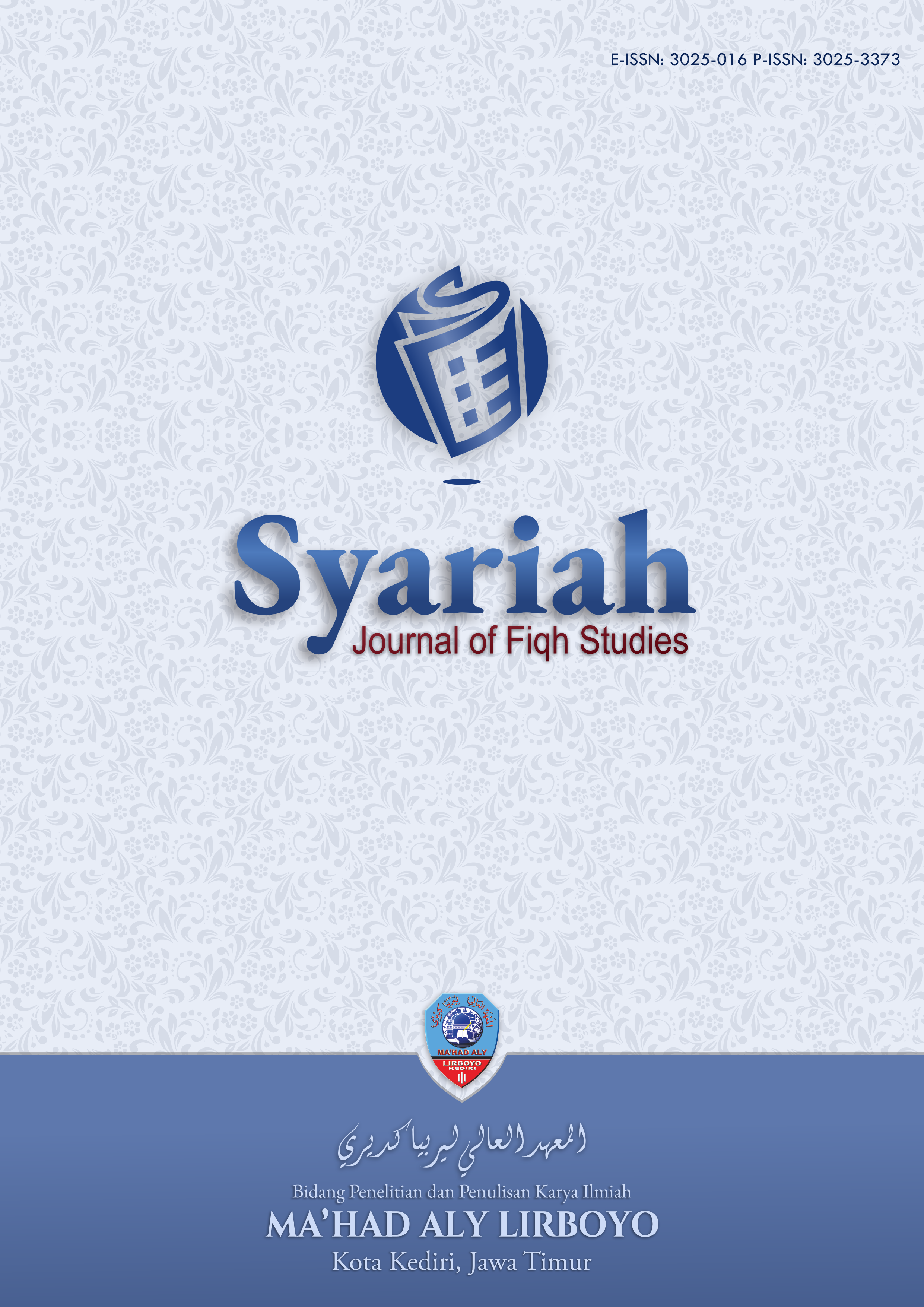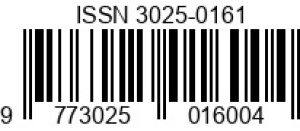Iḥyā’ al-Mawāt in the Shāfi‘ī School as a Legal Basis for Indigenous Community Ownership of Their Communal Land (Tanah Ulayat)
DOI:
https://doi.org/10.61570/syariah.v3i1.127Keywords:
Iḥyā' al-Mawāt, Customary Land, Shafii MazhabAbstract
This article analyzes the legal relevance of iḥyā' al-mawāt from the perspective of the Syafii Mazhab and contextualizes it against customary land, considering that both have similar characteristics in terms of the land tenure process. This research is essential to establish the legal force of customary land through the iḥyā' al-mawāt approach from an Islamic law perspective. To achieve this goal, the research method used is content analysis, which is classified as a qualitative method whose analysis is descriptive. Iḥyā al-mawāt is the management of land that is not owned and not utilized by anyone. Through the process of iḥyā' al-mawāt, a person is entitled to land ownership after conducting real management. Customary land is related to the territory that is communally managed by indigenous peoples. The results of the research on iḥyā' al-mawāt in the Shafii Mazhab found some differences with Customary Land in terms of land ownership and territory. Iḥyā' al-mawāt applies to free or formerly managed land that has been abandoned, while communal land relates to customary territories that are communally managed by indigenous peoples. Although there are differences in the aspects of ownership and management, both iḥyā' al-mawāt and customary land have the main similarity of land utilization, as well as land management of both implicating proof of ownership that is legal in state law and Sharia. This research provides theoretical benefits in the form of insight, information, and knowledge about the concept of iḥyā' al-mawāt in the Shafi'i Mazhab as a legal basis for indigenous peoples' ownership of their customary land.
References
Aliansi Masyarakat Adat Nusantara. “Catatan Akhir Tahun 2023,” 2024.
Asqalānī, Ibn Ḥajar al-. Talkhīṣ al-Ḥabīr fī Takhrīj Aḥādīth ar-Rāfi‘ī al-Kabīr. Vol. 3. Muasisah Qarthabah, 1995.
Ba‘lawī, ‘Abd ar-Raḥmān bin Muḥammad. Bughyah al-Mustarsyidin. Beirut-Lebanon: Dar al-Fikr, 1994.
Bujairamī, Sulaimān bin Muḥammad al-. al-Bujairamī ‘alā al-Khaṭīb. Vol. 3. Beirut-Lebanon: Dar al-Kutub al-Ilmiah, 1996.
Deliana, E. “How Indigenous Peoples Resolve Ulayat Land Disputes (Study in Koto Gasib, Siak Regency).” Iop Conference Series Earth and Environmental Science 1181, no. 1 (2023). https://doi.org/10.1088/1755-1315/1181/1/012008.
Iswari, F. “Portrait of Ulayat Land Conflicts in Minangkabau Customary Law Community: Alternative Resolutions Under Islamic Law.” Al Istinbath Jurnal Hukum Islam 10, no. 1 (2025): 219–49. https://doi.org/10.29240/jhi.v10i1.11066.
Mahmud, Muh. Afif. Perlindungan Masyarakat Hukum Adat dan Masyarakat Tradisional. Yogyakarta: LeutikaPrio, 2020.
Malībārī, Zainuddīn al-. Fatḥ al-Mu‘īn. Beirut-Lebanon: Dar Ibn Hazm, t.t.
Mangar, Irma -, dan Muhammad Rosyid Ridho. “Tanah Ulayat Adat Perspektif Hukum Positif Dan Hukum Islam.” El-Dusturie 1, no. 1 (21 Juni 2022). https://doi.org/10.21154/eldusturie.v1i1.4176.
Nawawī, Yaḥyā bin Syaraf an-. Rauḍah aṭ-Ṭālibīn. Lebanon: Dar Ibn Hazm, 2002.
Qulyūbī, Syihābuddīn Aḥmad bin Aḥmad al-, dan Syihābuddīn Aḥmad bin Burrulusy ‘Umairah. Ḥāsyiyah al-Qulyūbī wa ‘Umairah ‘alā Kanz ar-Rāghibīn. Vol. 3. Beirut-Lebanon: Dar al-Kutub al-Ilmiah, 2002.
Raaffina, Putri Almaas, Yehezkiel Gayuh Prasedhia, Septiawan Puji Trianto, Nur Laila Yuflikhati, dan Azizar Aryarindra Ihza S. “Hak Tanah Ulayat dalam Perspektif Hukum Adat dan Hukum Islam.” Jurnal Hukum Progresif 7, no. 1 (Mei 2024).
Salam, Safrin. “Penguasaan Fisik Tanah Sebagai Alat Bukti Kepemilikan Tanah Ulayat Di Pengadilan.” Crepido 5, no. 1 (16 Juni 2023): 1–14. https://doi.org/10.14710/crepido.5.1.1-14.
Santoso, Urip. Hukum Agraria: Kajian Komprehensif. Jakarta: Kencana, 2017.
Sembiring, Julius. Dinamika Pengaturan dan Permasalahan Tanah Ulayat. Yogyakarta: STPN Press, 2018.
Soekanto, Soerjono. Sosiologi Suatu Pengantar. Jakarta: Raja Grafindo Persada, 2004.
Soesangobeng, Herman. Filosofi, Asas, Ajaran, Teori Hukum Pertanahan dan Agraria. Yogyakarta: STPN Press, 2012.
Sufriadi, Yanto. “Konsep Hak Kepemilikan Berdasarkan Hukum Adat dan Hukum Islam.” Syiar Hukum : Jurnal Ilmu Hukum 19, no. 1 (29 Juni 2021): 1–24. https://doi.org/10.29313/shjih.v19i1.7008.
Syāfi‘ī, Muḥammad bin Idrīs asy-. Musnad al-Imām asy-Syāfi‘ī. Beirut-Lebanon: Dar al-Kutub al-Ilmiah, t.t.
Syahmunir, ed. “Kedudukan Wanita dalam Kepemilikian Hak Ulayat di Minangkabau.” Dalam Pemerintahan Nagari dan Tanah Ulayat. Padang: Penerbit Andalas University Press, 2006.
Syarāzī, ‘Alī bin Yūsuf al-Fairūzabādī asy-. Al-Muhażżab fī Fiqh al-Imām asy-Syāfi‘ī. Vol. 2. Beirut-Lebanon: Dar al-Kutub al-Ilmiah, 1995.
Syarwānī, ‘Abd al-Ḥamīd asy-, dan Aḥmad bin Qāsim al-‘Abādī. Ḥawāsyī asy-Syarwānī wa Ibn Qāsim al-‘Abādī. Vol. 6. Beirut-Lebanon: Dar Ihya’ at-Turats al-Arabi, t.t.
Syirbīnī, Muḥammad al-Khaṭīb asy-. Mughnī al-Muḥtāj. Vol. 3. Beirut-Lebanon: Dar al-Kutub al-Ilmiah, 2000.
Triyanta, A. “Ihya al-Mawat: Islamic Law Perspectives on the Concept of Land Occupation in International Law.” Manchester Journal of Transnational Islamic Law and Practice 19, no. 3 (2023): 224–32.
Wizārah al-Awqāf al-Kuwaitiyyah. Al-Mawsū‘ah al-Fiqhiyyah. Vol. 2. Kementerian Wakaf Kuwait, 1983.
Zuḥailī, Wahbah az-. al-Fiqh al-Islāmī Wa Adillatuh. Vol. 5. Damaskus: Dar al-Fikr, 1985.
Downloads
Published
Issue
Section
License
Copyright (c) 2025 Fuad Amin, Uzair bin Jamaludin, Deden Ubaidillah

This work is licensed under a Creative Commons Attribution-NonCommercial-ShareAlike 4.0 International License.
















